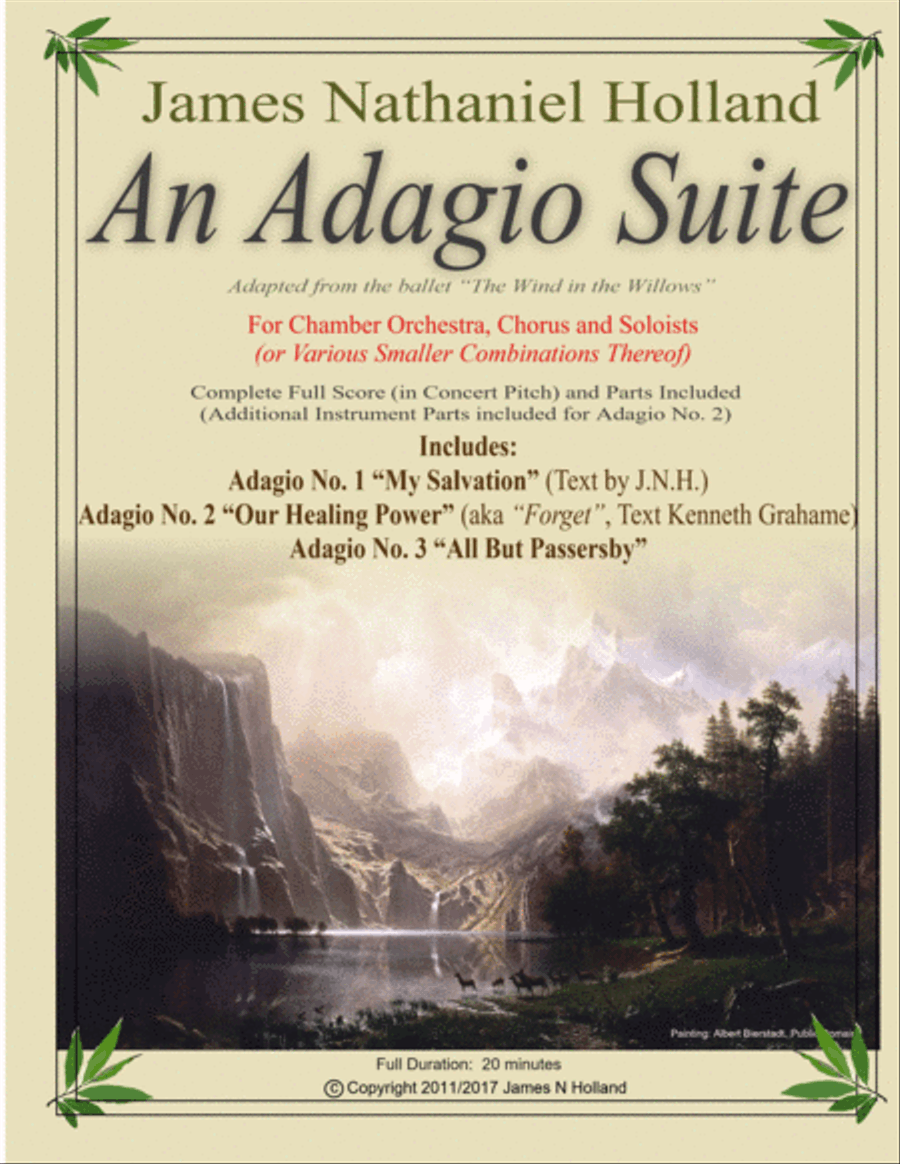Choral Choir (SATB) - Level 3 - Digital Download SKU: A0.730393 Composed by James Nathaniel Holland. Contemporary,Sacred,Wedding. Octavo. 92 pages. James Nathaniel Holland #3075871. Published by James Nathaniel Holland (A0.730393). New and original music by 21st century, American Costa Rican composer James Nathaniel Holland. This extremely versatile publication of a score and set of parts is a great addition to any orchestral or choral music library: either school, church, or community orchestra. Excellent for young musicians or intermediate-level volunteers, for the beginning conductor, but full of meaning for the professional orchestra as well.YouTube video presentation:https://youtu.be/WonTmPLYP1gThese three beautiful Adagios are adapted from JN Holland's ballet, The Wind in the Willows Perform together for concert or as stand alone pieces. They are perfect for weddings, funerals, graduations, or any solemn occasions. Texts are non-religious, but express universal sentiments of one's helping others, healing, and impermanence. Complete, intended orchestration for: fl, ob, cl Bb, bsn, hrn, hrp, SATB choir, strings Use as optional accompaniment for solos, or SATB choir. (Vocal parts included.) Adagio No. 1 My Salvation (or if If I've done one bit of good, that is my salvation) text by JN HollandAdagio No. 2 The Healing Power (aka Forget) Text by Kenneth GrahameAdagio No. 3 All Are PassersbyMix, omit and match combinations of available instruments of your group. Such as:Strings, woodwind quintet, harp (or piano), soloists and/or chorus. (omissions and combinations thereof, except the essential string section) String orchestra onlyTripled Strings players with woodwind quintetStrings, woodwind quintetIncluded are substitution parts in key of C for the parts of Clarinet in Bb and Horn in F (if those instruments are not available).Add one trumpet, or trombone, etc. etc.(Complete duration: 20 minutes)Composer website: http://lacoronadelossantos.net/jamesnathanielholland.html
